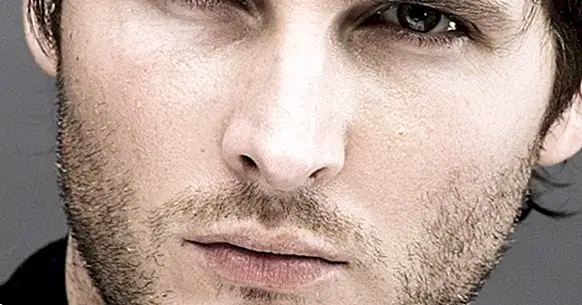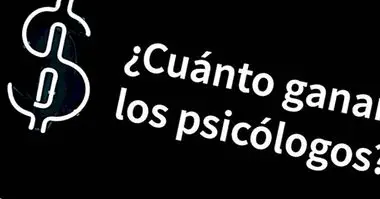Disruptive behaviors: description, causes and associated disorders
One of the normal phenomena that appears within the life development of the person, especially in childhood and adolescent stages, is the need to challenge authority. But what can initially be considered as an act of age or circumstances may hide a pattern of altered behavior.
When these challenges to authority are accompanied by other behaviors considered antisocial, we can consider them as disruptive behaviors . Throughout this article we will analyze the characteristics of these as well as their possible causes and the psychological disorders to which they are associated.
- Maybe you're interested: "Pyromania: causes, symptoms and effects of this disorder"
What are disruptive behaviors?
Traditionally, all actions or behaviors considered as antisocial have been understood as disruptive behaviors due to the fact that They differ from the accepted behavior and social values guidelines.
In addition, these behaviors are perceived as a threat to the harmony, harmony and peace of society and, even, a risk to the survival of all people. These behaviors are manifested through acts of hostility and provocation that encourage disorder and the irruption of routines and activities at both the individual and social levels.
Even though these behaviors can occur in a person of any age , in an isolated and punctual way or caused by some event or situation that supposes a great impact or trauma for the person, there are a series of behavioral alterations in which these behaviors make up some of the main symptoms.
According to the Manual of Diagnostic and Statistical of Mental Disorders (DSM) these alterations can be classified within the group of disruptive disorders of impulse control and behavior , which include both childhood and juvenile disorders and adults.
The group of behavioral disorders characteristic of children and adolescents are defined by the presence of continuous disruptive behaviors. These behaviors include all kinds of hostile and challenging behavior of certain minors toward any type of authority figure.
While it is common, and proper to the development of the child, that children go through periods in which they try to find where they are at the limit in their negative behaviors , children with some type of disruptive behavior disorder take to the extreme the achievement of these acts and behaviors, affecting their daily life, as well as the lives of those around them.
Within this DSM classification of disruptive disorders we find the following disorders:
- Defiant negativist disorder .
- Intermittent explosive disorder.
- Behavior disorder .
- Antisocial personality disorder.
- Pyromania.
- Kleptomania.
What are the signs or symptoms?
While it is true that each of the diagnostic categories described above have their own clinical picture with all kinds of distinctive symptoms, there are a series of symptoms or warning signs that can guide us when detecting if a person suffers or is developing any of the previous behavioral alterations, especially if they are children.
These signs can be categorized into three different groups: behavioral symptoms, cognitive symptoms, psychosocial symptoms.
1. Behavioral symptoms
They are, fundamentally, the following.
- Social isolation
- Harassment behavior towards other people.
- Tendency to negative behaviors.
- Theft or theft behavior .
- Destruction or intentional damage to the property of others, public or private.
- Tendency to blame others.
- Actively defy authority.
- Refusal to comply with regulations or rules.
- Samples of cruelty with animals.
- Tendency to play with fire.
2. Cognitive symptoms
These are the usual cognitive symptoms.
- Concentration problems.
- Frequent feelings of frustration .
- Impairment of memory.
- Inability or problems to reflect before speaking.
- Difficulties to solve problems .
3. Psychosocial symptoms
These are the most relational aspects of this psychological phenomenon.
- Lack of empathy.
- Lack of remorse .
- Feeling of grandiosity.
- Persistent negativity.
- Constant irritability and persistent.
- Low self-esteem.
What causes this type of behavior?
As with the symptoms, each disorder of disruptive behavior has a number of causes of its own. However, there are a number of risk factors that favor the appearance and development of these disruptive behaviors. Among them we find:
- Exposure to violence.
- Family history of mental illness or substance abuse.
- Domestic violence .
- Suffering from abuse and / or neglect.
- Poor or inconsistent parenting .
Disorders associated with disruptive behavior
As we mentioned, the disruptive behaviors they do not necessarily have to be associated with a psychological disorder . However, when these appear persistently and accompanied by other symptoms it is possible that it is one of the disorders of disruptive behavior.
1. Defiant negativist disorder (TND)
The defiant negativist disorder is defined by the appearance in the child of a pattern of negativist, defiant, disobedient and hostile behavior towards authority figures.
A child with ODD can constantly discuss with adults, lose control of their emotions very easily, refuse to follow rules, continually annoy others and behave in an angry, resentful and vengeful manner. In these cases it is very common for the child to cause constant conflicts and disciplinary situations both at school and at home.
In a large proportion of cases, without early diagnosis and treatment, the symptoms of the oppositional defiant disorder worsen over time and, occasionally, become severe enough to trigger a diagnosis of conduct disorder.
2. Intermittent explosive disorder
This alteration of behavior is a psychological disorder in which the person manifests a random pattern of disruptive, aggressive and disproportionate behavioral responses. In most cases, they are caused or caused by a specific reason, or without an apparent purpose; coming to cause severe damages in the social environment of the person and in herself.
3. Conduct disorder
Conduct disorder is a more serious version of the defiant negativist disorder. Defined by the DSM itself as a repetitive and persistent pattern of behavior in which the person violates the basic rights of others , as well as the main social norms linked to the subject's age.
This disorder can involve serious assaults on people or damage to animals, deliberate destruction of property or vandalism, theft, missing classes and trying to bypass social norms without being caught.
4. Antisocial personality disorder
In this case, the clinical picture is very similar to that of the conduct disorder but with the requirement that can only be diagnosed in people older than 15 years . In addition to the behaviors that appear in the previous diagnosis, the antisocial personality disorder we also find other disruptive behaviors like
- Lack of adaptation to social norms and legality.
- Impulsiveness .
- Inability to acquire responsibilities.
- Disregard for one's own safety or that of others.
5. Pyromania
Popularly known as arsonists, these subjects show behaviors that are distinguished by the reiteration of acts or attempts to cause fires or set fire , without an objective or apparent motivation, both to the property of others and to any type of object.
6. Kleptomania
Finally, the last of the psychological disorders in which disruptive behavior is one of the main symptoms is kleptomania. In it, the person manifests Repeated behavior of theft or appropriation of what is foreign . What distinguishes this disorder from the habitual act of stealing is that the person does not seek to enrich or obtain material goods, but that the moment of theft is in itself a purpose.



















